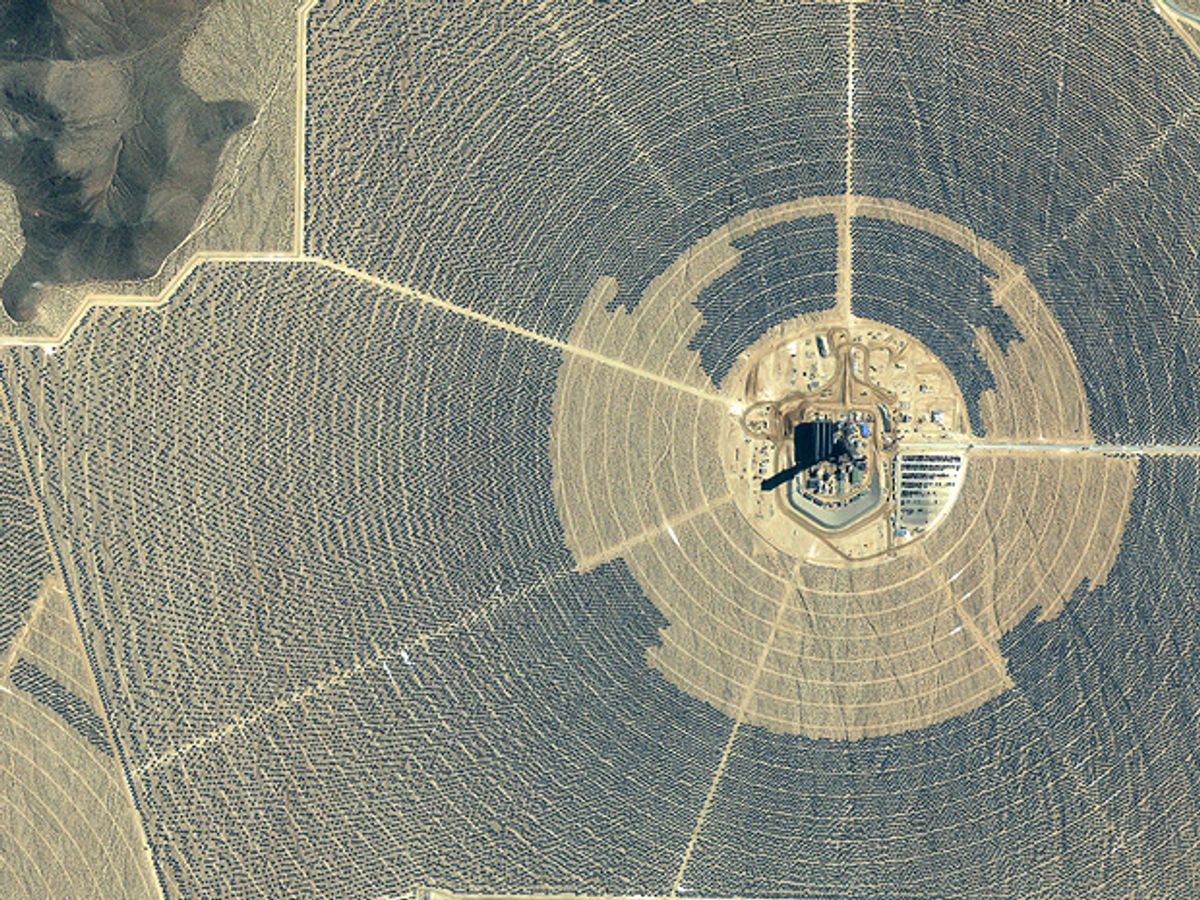The Ivanpah Solar Electric Generating System delivered its first kilowatts of power to Pacific Gas and Electric (PG&E) on Tuesday.
The world’s largest solar thermal plant, located in the Mojave Desert, sent energy from its Unit 1 station to PG&E, which provides power to parts of Northern California. When the plant is fully operational later this year, it will produce 377 megawatts. Two of the plant's three units will supply energy to PG&E and the other will deliver power to Southern California Edison.
"Given the magnitude and complexity of Ivanpah, it was very important that we successfully complete this milestone showing all systems were on track," Tom Doyle, president of NRG Solar, one of the plant’s owners, said in a statement.
The massive project spans more than 1400 hectares of public land and will double the amount of commercial solar thermal energy available in the United States. There are other large concentrated solar power (CSP) projects in the Middle East and Spain, but most of the growth in solar in the United States has come from photovoltaic (PV) panel projects, which have come down considerably in price in recent years.
Even with the proliferation of cheap solar PV, there is other value in CSP projects, which use large mirrors aimed at large central towers that create steam to drive turbines. A study earlier this year from National Renewable Energy Laboratory (NREL) found that a concentrated solar facility would be particularly useful for providing short-term capacity when other operators are offline or as a peaker plant when demand is highest. And steam turbines, unlike intermittent wind and solar PV, offer a steady power supply that operators can turn on or off or fine-tune on demand.
Google, which has invested heavily in renewable energy projects—including $168 million it put into Ivanpah—also sees value in CSP. “At Google we invest in renewable energy projects that have the potential to transform the energy landscape. Ivanpah is one of those projects,” Rick Needham, director of Energy and Sustainability at Google, said in a statement. In addition to generation, Google's investments in wind and solar include a solar financing company and the Atlantic Wind Connection project.
And it just wouldn't be an energy project without some criticism. Ivanpah's creators have been chided for the plant's potential to transform the physical landscape—especially its impact on the desert ecosystem and desert tortoises in particular. But some environmentalists see the risk as an acceptable one if utility-scale solar installations are replacing coal-fired power plants. California has a goal to get 33 percent of its electricity from renewables by 2020.
Photo Credit: Brightsource Energy



